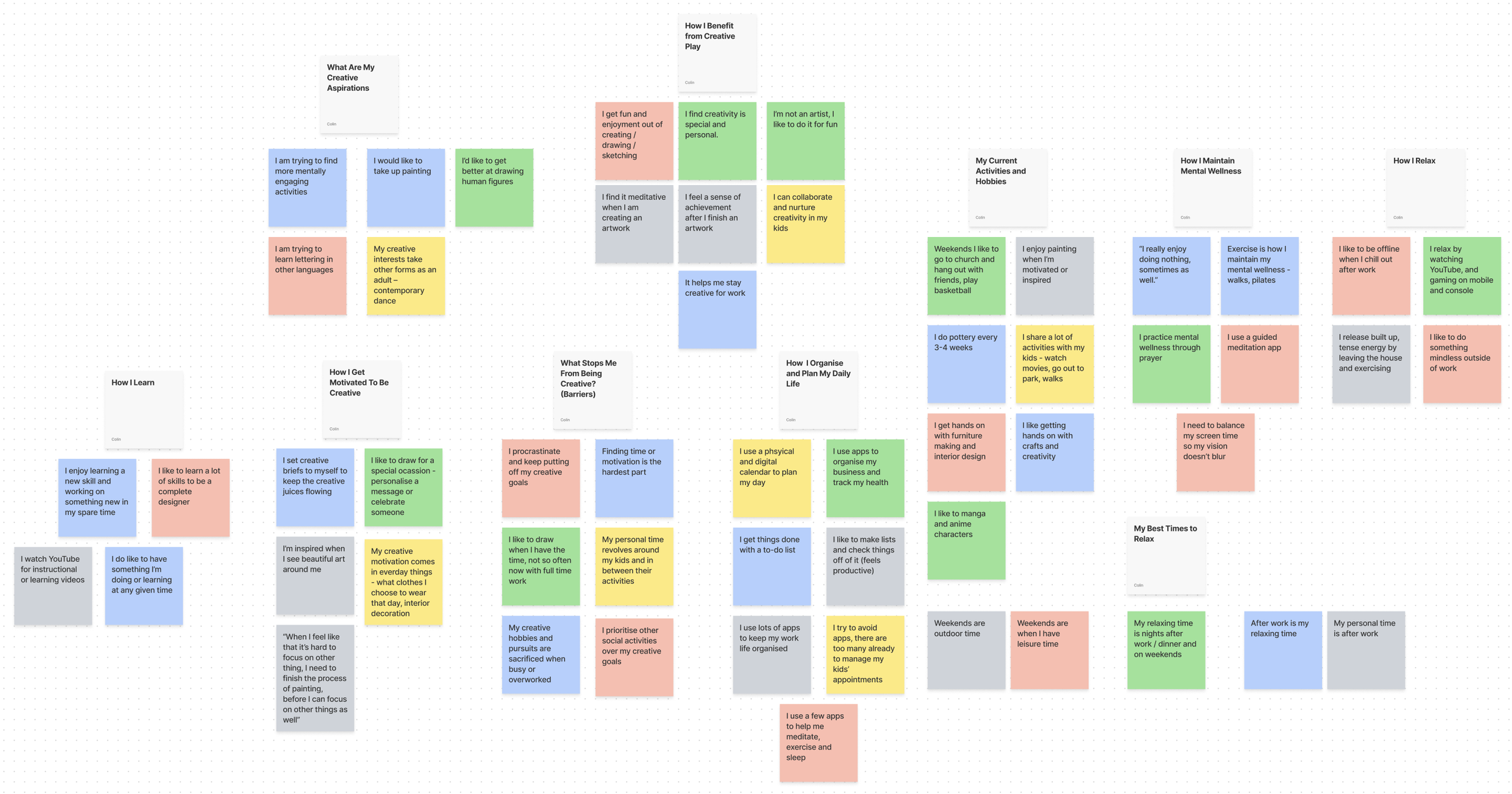Case Study: Drawdle
As part of the General Assembly UX Design course, students were asked to develop a product to address a pain point that was personal to them. My general topic was on the concept of play and how to reintroduce it into the lives of busy adults. This was my first formal learning in user experience where I developed skills in researching, data synthesis, ideation, prototyping and usability testing. The following is an account of some of the key stages in this project.
Discover
One of the first steps in the discover stage was to develop a research plan. Here I defined the:
Problem Space: Practicing creativity for everyday people.
Challenge: Most adults find it hard to dedicate spare time to practicing creative hobbies during their busy days.
and Target Audience: Adults who have creative blocks or find it hard to dedicate time in their day for creative hobbies/exercise.
Next I conducted user interviews, which, to be honest, was the stage in this process I was most nervous about. My lack of experience in interviewing methodology and best practice did not deter me though and I remembered back to an old journalism lecturer I had in my undergraduate course who said that an interview is just a conversation. With this in mind, I interviewed friends and colleagues about their daily schedules, hobbies and aspirations to try and gather data relating to my topic of creative play.
Define
I synthesised the responses to an affinity map in Figma and grouped connecting insights into themes. Using the themes I identified in the affinity map, I developed a user persona to help guide decisions on the product I would design. The persona was Jill The Lapsed Creative, who:
is motivated to improve themself
seeks a healthy work/life balance
is mentally and creatively tired from work
unwinds through too much screen time
To further define the problem my product would solve, next I developed a problem statement:
“Jill needs a convenient creative outlet, because their schedule is busy with existing commitments.”
Design
In the ideation stage I practiced a number of creative brainstorming activities, such as How Might We Statements and Crazy 8’s. Based on some of these ideas, I sketched out possible features for my product and mapped them to a feature prioritisation matrix. From this, I identified that I wanted to design an app that provided daily creative prompts for users to use as inspiration to draw. For example, one day it might suggest to draw your favourite outfit, and another draw something a stranger would not know about you. I named the product Drawdle: the daily drawing app and from here, I created a user flow and started the wire-framing stage.
Deliver
As a graphic designer, the prototyping stage was an exciting new experience. Learning the basics of Figma and what it can do was a game-changer and I hope to learn more about its potential. What I didn’t anticipate though was how much I enjoyed usability testing. I synced the Figma file to Maze and shared with three users per round of testing. I was amazed (no pun intended) by the data that Maze was able to collect and present, especially the heat map and clicks to success. The main learnings from usability testing were:
Include multiple and obvious ways to progress the journey.
Everything that looks like it can be clicked will be clicked.
Brief the usability test comprehensively to mitigate further confusion during the test.
Based on the feedback from usability testing, I further developed the product into a high fidelity prototype. If you would like to test the prototype, please click here.
Reflecting on my time during the General Assembly UX course, I was overwhelmed initially by the amount of information to cover in a short amount of time. However, once I tried the teachings in real life and became familiar with some of the processes and best practice, I felt more comfortable and realised that many of the concepts overlapped into my existing design skills; such as creative thinking, iterating and problem solving. Although I feel more confident in my graphic design skills, UX and design thinking is an area I hope to continue to grow in and I have already started to use my learnings in my everyday life.


